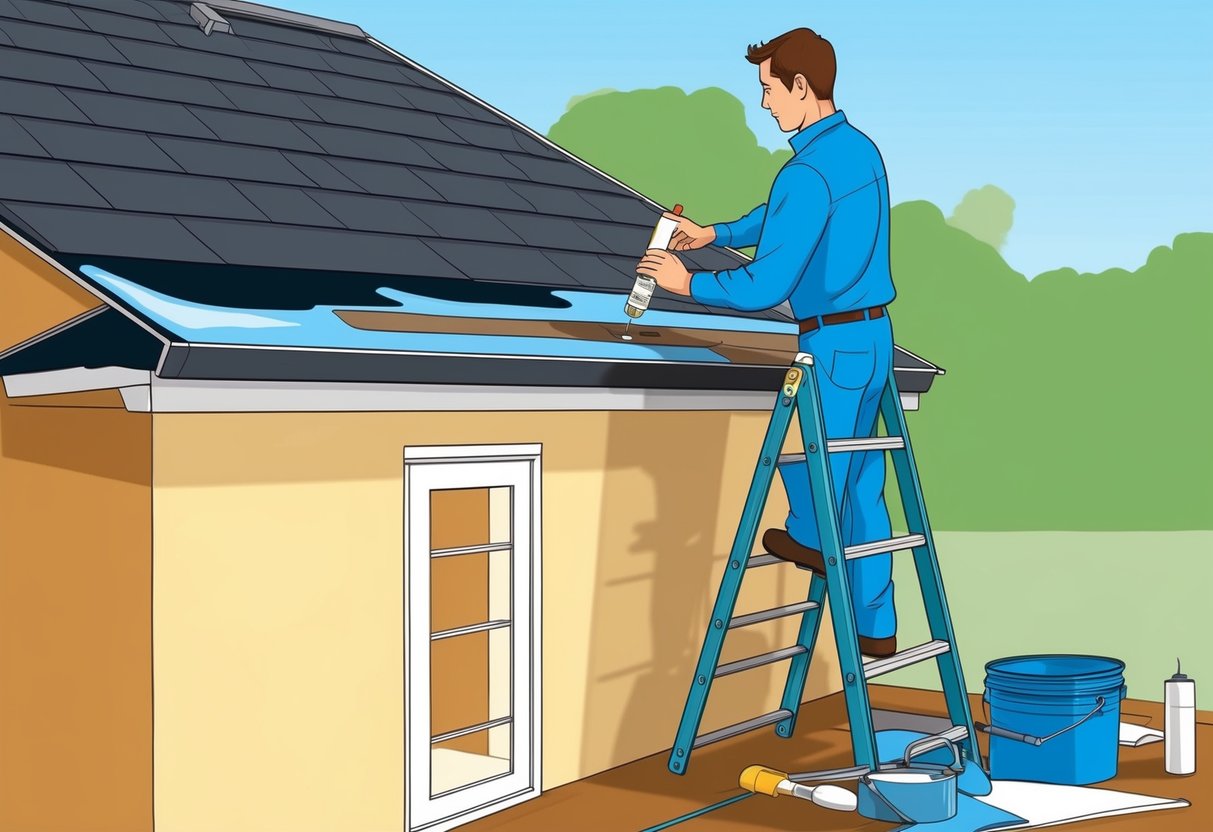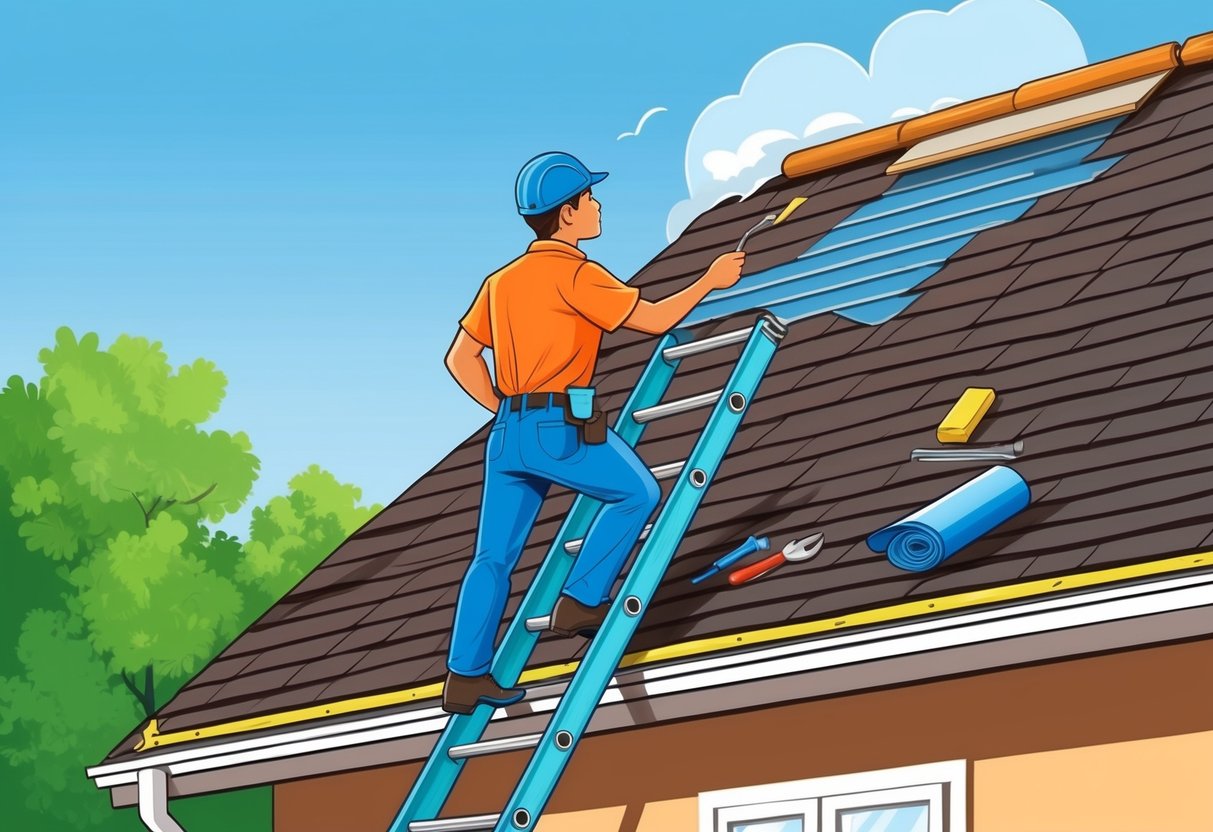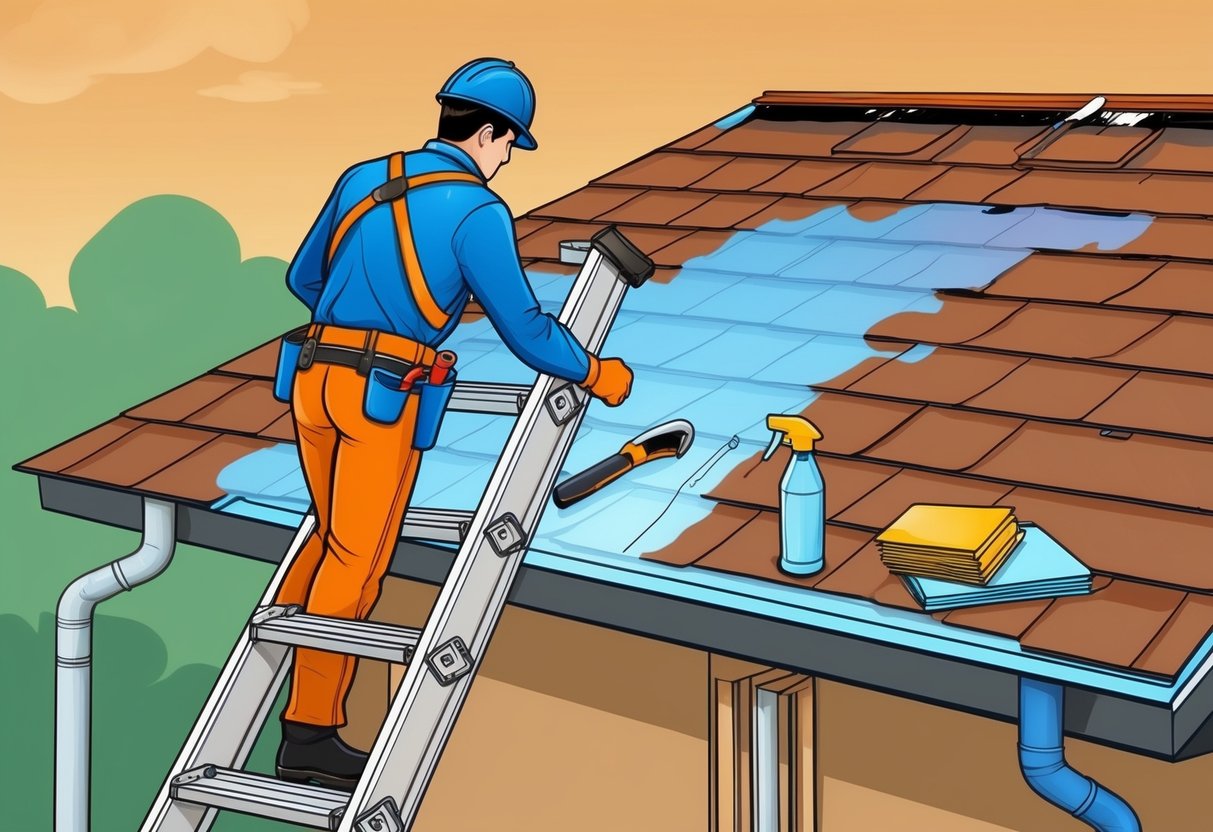
Preventing Mold and Further Moisture Damage
Properly addressing water penetration is essential for stopping mold development and minimizing moisture.
Quick action helps limit long-term issues such as extensive water stains and rot.
Drying and Cleaning Water-Damaged Areas
After repairing a leaky roof, the first priority is to dry out any affected areas.
Open windows and doors for ventilation, and use fans or dehumidifiers to remove moisture from the air.
For larger leaks, industrial drying equipment helps speed up the process.
If insulation, drywall, or ceiling tiles are saturated, remove and discard them.
These materials trap moisture and allow mold to thrive.
Solid surfaces like wood or metal can be wiped down with a mild detergent solution to clean off dirt and reduce contamination.
Immediately address visible water stains and wet patches.
Blot and absorb pooled water with towels, then check beneath carpets or flooring for hidden dampness.
Quick, thorough drying lowers the risk of mold and further structural damage.
Tips for drying:
- Keep humidity below 50%
- Regularly empty dehumidifier reservoirs
- Inspect for new or lingering damp spots each day
Treating and Preventing Mold Growth
Mold can develop within 24-48 hours if moisture isn’t thoroughly addressed.
Check for musty odors and black, green, or white spots on walls, ceilings, and furniture.
Areas with persistent water stains are especially susceptible.
Use a solution of one cup bleach to one gallon of water to treat hard, non-porous surfaces.
Scrub the area and allow it to dry completely.
For porous materials with mold growth such as carpets or insulation, replacement is usually necessary to eliminate spores and prevent spread.
Lowering indoor humidity with a dehumidifier and running bathroom or kitchen ventilation fans can help prevent future mold outbreaks.
Fix cracks or gaps in ceilings, walls, and around windows to stop further moisture intrusion.
Scheduling regular inspections makes it easier to catch early signs of mold and moisture problems before they cause structural damage.
Long-Term Roof Maintenance Tips

Consistent roof maintenance is necessary to prevent leaks, reduce repair costs, and maximize the service life of roofing materials.
Steps like routine visual checks and simple upkeep measures play a vital role in keeping residential roofs in solid condition.
Regular Inspections and Maintenance
A homeowner should inspect the roof at least twice a year, ideally in spring and fall.
After major storms, an additional inspection is recommended to catch any new damage early.
When inspecting the roof, look for missing, loose, or damaged shingles, and check for signs of wear around flashing, chimneys, and vents.
Clear away debris such as leaves, branches, and dirt that can collect in valleys or gutters.
Clogged gutters can lead to water back-up and leaks along rooflines.
Using a wire brush or steel wool can help clean trouble spots after a leak is found and ensure a proper surface for patching.
For a step-by-step repair process, visit this guide on fixing a leaking roof.
If small issues are noticed, they should be addressed as soon as possible to prevent further water intrusion or structural damage.
Routine checks can also help spot early signs of mold, wood rot, or interior ceiling stains.
Strategies to Extend Roof Lifespan
Proactive steps can significantly extend the lifespan of asphalt shingles, tiles, or metal roofing.
Address minor roof repair issues promptly—minor cracks in sealant, loose flashing, and popped nails should not be ignored.
Re-caulk or re-seal flashing as it ages because these areas are common sources of leaks.
Trim overhanging branches to prevent abrasions or debris build-up, and keep roof valleys free of obstruction.
Adequate attic ventilation and insulation can help regulate temperature and reduce moisture build-up beneath the roof.
This minimizes the risk of ice dams and condensation problems.
Schedule professional inspections every few years for a more thorough review.
Professionals are trained to pinpoint problems not always visible from the ground, such as issues with underlayment or hidden leaks.
For more, see this comprehensive roof repair guide.
Regular care preserves the protective qualities of the roofing system and reduces the likelihood of emergency repairs.
When to Call a Professional Roofer

Certain leaky roof issues can surpass the skills or tools available to most homeowners.
Understanding how to spot severe structural damage and navigate repair costs can help prevent further property damage.
Recognizing Severe Roof or Structural Damage
Signs of major roof or structural damage demand prompt action from a qualified roofing contractor.
These problems often include large or widespread leaks, sagging roof decking, significant water stains along ceilings and walls, and visible daylight through the attic structure.
If shingles are missing over a wide area, or if flashing around chimneys, skylights, or vents is significantly deteriorated, these suggest more than a minor fix.
Water pooling in the attic, mold growth, and rotted wood are further indicators that the roof’s integrity may be compromised.
Attempting DIY repairs in these cases can worsen the issue or create safety hazards.
It’s also important to watch for interior damage.
Warped ceilings, peeling paint, and bubbling drywall can signal hidden leaks and structural concerns.
When in doubt, scheduling a professional roof evaluation ensures any hidden or escalating issues are identified quickly.
A trusted contractor will inspect not only the surface but also the underlying structure for hidden damage.
For more signs and details, see common causes and when to call a pro at Results Roofing.